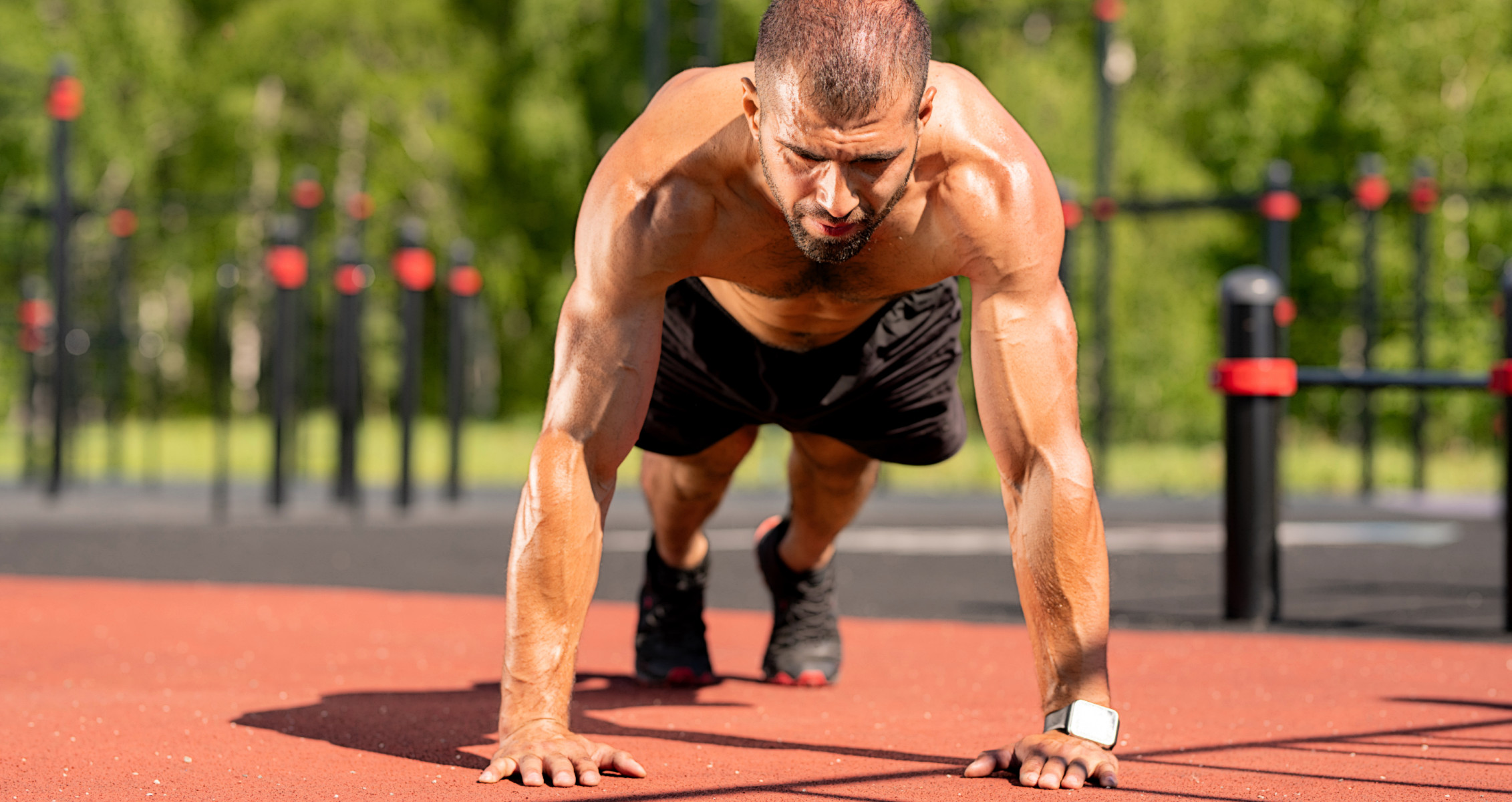Positional Isometrics for Maximal Muscle Growth
While lifting heavy weights is a great way to build muscle, it isn’t always an option for everyone. Whether you travel for work, are coming off an injury, have limited access to equipment, or just feel like mixing things up…you can diversify your training approach and continue to build muscle with positional isometrics.
What are positional isometrics?
You know the three types of muscle contractions:
- Concentric: When a muscle shortens under load
- Eccentric: When a muscle lengthens under load
- Isometric: A static contraction with no change in joint position
- Yielding isometrics: Holding a position and resisting the urge to move
- Overcoming isometrics: Trying to move an immovable object
Positional isometrics are when you add segmented pauses throughout an exercise’s range of motion (during the concentric and/or eccentric phases). For example, during a squat you would pause at various points during the eccentric phase. And as you squat back up, you would pause at various points during the concentric phase.
 Why do positional isometrics?
Why do positional isometrics?
- Time under tension. Tempo is like cooking times for recipes. If a recipe calls for you to cook chicken for 30 min but you take it out of the oven after 15, it’s going to be inedible. Your muscles need to be under tension for adequate time to reap the hypertrophy benefits of an exercise. Positional isometrics increase the total time your muscles are under load.
- Joint/ligament health. Lifting can put a toll on your joints/ligaments over time if you’re not focusing on adequate recovery. Isometrics can be beneficial if you’re experiencing pain and want to train without adding more wear and tear to your joints and ligaments. With that being said, if you’re coming off an injury or experience chronic pain, it’s always a good idea to consult a professional before diving into any training program (physical therapist, chiropractor, athletic therapist, doctor, etc.).
- Strengthening sticking points. While isometric contractions involve static positions, strength increases occur at roughly 10 degrees of either side of the joint angle at which the lift is performed (1). This can be beneficial if you want to train to get past certain weak/sticking points during a lift (ex. top-end of the bench press as you lockout your arms; or coming out of the bottom of a squat). Adding positional isometrics during the eccentric and/or concentric phase of a lift will increase your strength potential throughout the entire ROM.
- Mind-muscle connection. This term gets thrown around a lot, but there’s something to be said about increasing body awareness by dialing in on specific muscles to act as the prime mover(s) during an exercise. Positional isometrics increases blood flow and allows you to develop a stronger mind-muscle connection to the prime movers of an exercise. Having trouble feeling your delts during lateral raises? Add segmented pauses during the concentric/eccentric portions and watch your boulders grow.
- Better positioning. Lifting technique is your foundation when it comes to building strength and increasing muscle mass. Adding pauses under load throughout an exercise’s ROM with positional isometrics reinforces optimal technique.
- No momentum or cheating. You can’t cheat your way through positional isometrics. You’re either controlling the lift or not. No swinging or momentum is going to help you, so prepare to be humbled.
- Little to no equipment needed. Whether you have a fully equipped gym or not, you don’t really need big ass weights when you’re adding pauses to your lifts. For example, I’ll often program isometrics for my clients who travel frequently for work or train at home with limited access to equipment. Positional isometrics are a great way to increase the intensity of your workout, with or without heavy weights.
Training Recommendations
- Focus on maximal contraction. It isn’t just about holding the position for the sake of holding it. In order to build muscle, you need to lift with intent. To get the most out of positional isometric exercises, focus on maximal muscle contraction every rep.
- How many sets and reps should you do?
- This largely depends on your training history and goals, but anywhere in the ballpark of 3-4 sets per workout will suffice for the purposes of stimulating muscle hypertrophy.
- How long should each isometric contraction be?
- Since positional isometrics call for multiple pauses throughout an exercise’s ROM, each pause should be no longer than 3-5 seconds. So if you have 4-5 pauses during a single set, the total time under tension will be roughly 12-25 sec. Where you land on that spectrum will depend on the weights you’re using and your training history/goals.
How often should you use positional isometrics?
- Positional isometrics aren’t overly taxing on your joints, ligaments, and nervous system, so they can be trained frequently. 2-3 times per week is more than enough. But as with any training method, there is such thing as overuse when it comes to positional isometrics. Pay attention to how you’re responding to your workouts and whether or not you’re continuing to see the benefits. If not, adjust accordingly and move forward from there. Personally, I like to program for myself in three to four week blocks. I’ll typically use positional isometrics for no longer than 2 blocks (6-8 weeks total) before taking them out completely for at least a week or two to help give my body a “reset” before incorporating them back into my program. This helps me recover and keep things interesting which is super important when it comes to your program.
- Super-setting positional isometrics with full ROM reps
- To add to the self-inflicted torture that is positional isometrics, you can superset them with full range of motion reps. Let’s take the Arnold press for example:
- Perform 3 reps of the following
- 3 sec pause at the bottom of the press (supinated grip)
- 3 sec pause at ⅓ of the press (pronated grip)
- 3 sec pause at ⅔ of the press
- Then immediately perform as many full reps as possible through the entire ROM with no pauses
- Perform 3 reps of the following
- To add to the self-inflicted torture that is positional isometrics, you can superset them with full range of motion reps. Let’s take the Arnold press for example:
Examples of Positional Isometric Exercises
Summary
Lifting heavy weights is a great way to build muscle, but it’s not the only way. What’s more, lifting heavy isn’t always an option. So it’s important to diversify your workouts with various training approaches to create an adaptive response in your muscles. Positional isometrics is just one of many great ways to accomplish this. Think they’re easy? Try them out and think again.
References
- Physical Rehabilitation; Evidence-Based Examination, Evaluation, and Intervention by Michelle H. Cameron, Linda Monroe

 Why do positional isometrics?
Why do positional isometrics? How often should you use positional isometrics?
How often should you use positional isometrics?







